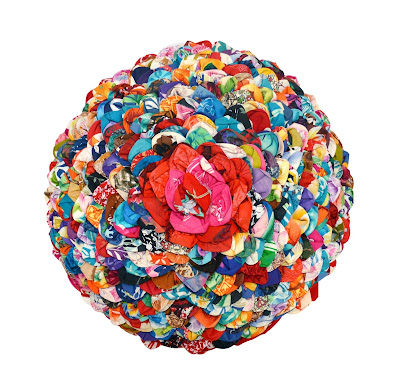 |
| 1970s Hawaiian scrap quilt found in Oregon |
At first, there were only a few quilts in my Hawaiian scrap quilt group; two quilts, to be exact. One was discovered at an Antique Expo event in Portland, and the other came from an eBay seller in Hawaii. With just a couple clues, I started sniffing around.
The tradition of scrap quilts in Hawaii revealed itself by chance, and I pursued it. The quilts were a little hard to find at first, and still do not come along every day, but I found plenty of them once I really started looking.
In January, I went to Oahu on a vintage buying trip and found a bunch of scrap quilts and tops. Some of them were earlier pieces with 1950s fabrics, made in the 50s or 60s. Most were 1970s. I talked to people when I was there, and learned a few things about the quilts, the fabrics and the culture.
It was a moment when research led to rewards far beyond the academic. There was nothing like running around to vintage shops in Hawaii, wearing shorts, sunglasses and sandals, and taking short breaks for fresh ahi poke while all my friends were snowed-in back in Portland! Sorry, friends, but it was sweet, and I deserved it!
In terms of academic rewards, the quilts and tops I found confirmed specific methods of construction popular in these objects, such as the absence of batting and the use of aloha shirt and muu muu fabrics.
The tradition of scrap quilts in Hawaii essentially sprang out of the garment industry, the source of cutaway fabric scraps. A lot of those factories closed in the 1970s following a decline in tourism. Something had to happen with the scraps, and it did. Where there are scraps, there are quilts!
 |
| The Queen's Quilt |
 |
| Lili'uokalani as a young lady |
The crazy quilt, and/or scrap quilt - as a form of expression - was part of Hawaiian cultural identity even before many were made there. Hawaiians knew about the Queen's Quilt, and when cutaway garment scraps were available decades after Lili'uokalani was deceased, Hawaiians made crazy patchwork. It's like they just knew to do it that way.
When I went looking for quilts, I found them. At this point the group includes more than 50 examples.
It was interesting to distinguish between the earlier and later mid-century quilts. One of the main differences was the inclusion of DayGlo fabrics in the examples from the middle 1960s and later.
Recently I met more than one person from Hawaii, and I learned crazy patchwork blankets were made for newborn babies. I'm sure there were cottage businesses making baby quilts, as well as individual quilters making quilts as gifts.
I also found a pillow not too long ago. Hard to say if it is related or represents a larger trend in Hawaii, but I will be asking.
 |
| traditional Hawaiian applique quilt |
Those elements were uleashed later, in the scrap quilts, which were rooted in Hawaiian culture as much as the applique quilts. The scrap quilts also had the strong connection to the Hawaiian garment industry, and by association the travel and tourism industry as well. Say what you will about old quilts. It is only "a thing" when there are quilts. In a nutshell, that's why black and white mourning quilts weren't a thing. There were not enough quilts to support the idea.












The Hawaiian scrap quilts are beyond fabulous. Be still my heart!
ReplyDeleteSo interesting! I was recently in Hawaii (for the first time). The next time I go, I'll know that this is "a thing."
ReplyDeleteI so love all of these! Thank you for collecting and showing them!
ReplyDeleteI think it's so great that you're building up a body of these Hawaiian quilts and of other quilts whose styles are out of the current mainstream. Future researchers will owe a great debt to you.
ReplyDelete